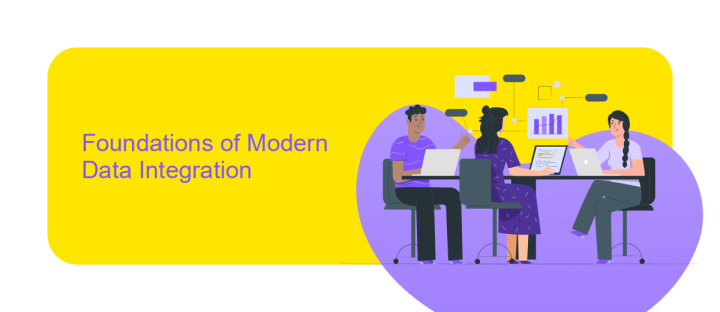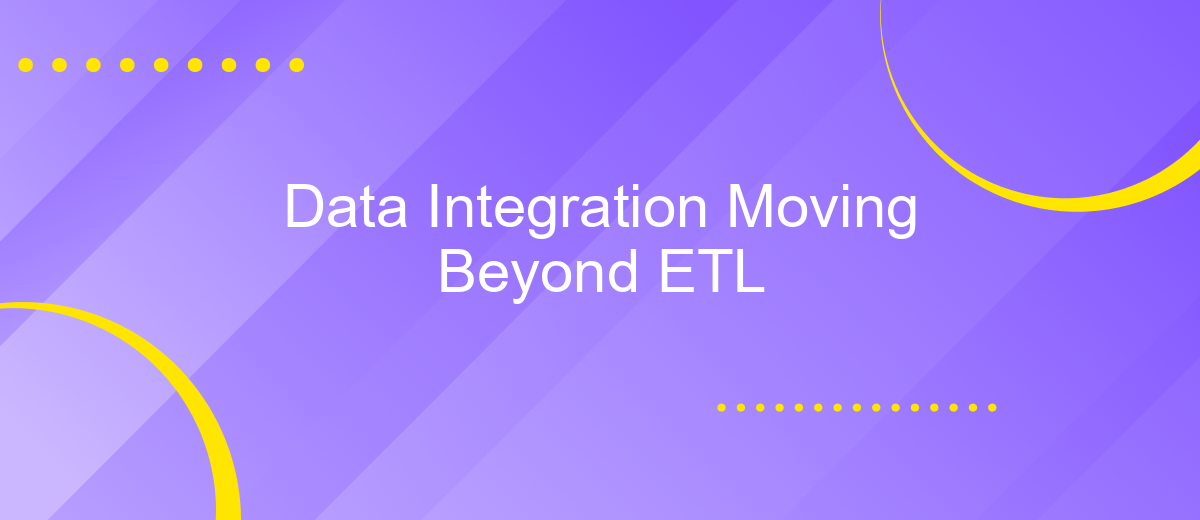Data Integration Moving Beyond ETL
Data integration has long been synonymous with ETL (Extract, Transform, Load) processes, but the landscape is rapidly evolving. As organizations face increasing data complexity and demand for real-time insights, traditional ETL methods are proving insufficient. This article explores how modern data integration strategies are moving beyond ETL, leveraging advanced technologies and methodologies to meet today's dynamic data challenges.
Why ETL Is No Longer Sufficient
In today's rapidly evolving data landscape, traditional ETL (Extract, Transform, Load) processes are increasingly becoming inadequate. ETL was designed for a time when data sources were limited and relatively static. However, with the explosion of diverse data sources and the need for real-time insights, businesses require more agile and scalable solutions.
- ETL processes are often batch-oriented, leading to delays in data availability.
- They struggle to handle the variety and volume of modern data sources.
- ETL tools can be complex and require significant maintenance and resources.
- Lack of real-time processing capabilities limits timely decision-making.
Modern data integration solutions, such as ApiX-Drive, address these limitations by offering real-time data synchronization, easy setup, and support for a wide range of data sources. These tools enable businesses to integrate data seamlessly and efficiently, ensuring that decision-makers have access to up-to-date information. As a result, organizations can respond more quickly to market changes and drive better business outcomes.
Foundations of Modern Data Integration

The foundations of modern data integration are rooted in the need to efficiently combine data from disparate sources, ensuring seamless access and usability. Traditional ETL (Extract, Transform, Load) processes have evolved to accommodate the growing complexity and volume of data. Today's integration strategies leverage advanced tools and methodologies to streamline data workflows, improve data quality, and enhance real-time processing capabilities. Key components include data lakes, cloud-based platforms, and robust APIs that facilitate smooth data exchange across various systems.
Services like ApiX-Drive exemplify the modern approach to data integration. By providing a user-friendly interface and a wide range of pre-built connectors, ApiX-Drive simplifies the process of setting up and managing integrations. This enables organizations to automate data flows without extensive coding or technical expertise. The use of such platforms ensures that data remains consistent, accessible, and ready for analysis, ultimately driving better business decisions and operational efficiency.
Benefits of Moving Beyond ETL

Moving beyond traditional ETL (Extract, Transform, Load) processes offers numerous advantages for businesses looking to streamline their data integration efforts. Modern data integration solutions provide more flexibility, efficiency, and scalability, enabling organizations to handle complex data environments more effectively.
- Enhanced Data Quality: Advanced data integration tools ensure higher data accuracy and consistency by automating data validation and cleansing processes.
- Real-Time Data Processing: Unlike traditional ETL, modern solutions support real-time data integration, allowing businesses to make timely, data-driven decisions.
- Scalability: Newer data integration platforms are designed to scale effortlessly, accommodating growing data volumes and increasing complexity without compromising performance.
- Reduced Operational Costs: By automating and optimizing data workflows, businesses can significantly cut down on manual labor and associated costs.
- Improved Collaboration: Modern tools, such as ApiX-Drive, facilitate seamless integration across various applications and services, promoting better collaboration and data sharing within organizations.
By embracing these advanced data integration methods, companies can unlock the full potential of their data assets, driving innovation and gaining a competitive edge in the market. Solutions like ApiX-Drive play a crucial role in this transformation, providing user-friendly interfaces and robust functionalities to streamline integration processes.
Strategies for Successful Data Integration

Successful data integration requires a well-thought-out strategy that goes beyond traditional ETL (Extract, Transform, Load) processes. Companies need to focus on real-time data processing, ensuring that data is accurate, consistent, and easily accessible across various platforms. This involves understanding the specific needs of the organization and tailoring the integration approach accordingly.
One of the key aspects of data integration is choosing the right tools and technologies. With the rise of cloud computing and big data, there are numerous solutions available that can streamline the integration process. For instance, ApiX-Drive offers a versatile platform that allows businesses to connect different applications and automate data workflows without the need for extensive coding knowledge.
- Identify and understand data sources and requirements.
- Select appropriate integration tools and platforms.
- Implement data quality and governance measures.
- Ensure real-time data access and processing capabilities.
- Continuously monitor and optimize integration processes.
By adopting these strategies, organizations can achieve seamless data integration that not only enhances operational efficiency but also provides valuable insights for decision-making. Leveraging tools like ApiX-Drive can facilitate the process, making it easier to manage and integrate data from diverse sources.
- Automate the work of an online store or landing
- Empower through integration
- Don't spend money on programmers and integrators
- Save time by automating routine tasks
Conclusion
In conclusion, the evolution of data integration has moved significantly beyond traditional ETL processes. Modern businesses require more agile, real-time data integration solutions to stay competitive and meet the demands of a data-driven world. The integration landscape now includes advanced tools and platforms that facilitate seamless data flow across various systems, ensuring data accuracy and accessibility.
One notable example is ApiX-Drive, a service that simplifies the integration process by automating data transfers between different applications. By leveraging such services, organizations can reduce manual efforts, minimize errors, and enhance overall efficiency. As we continue to advance in the realm of data integration, it is crucial for businesses to adopt innovative solutions that enable them to harness the full potential of their data assets, driving better decision-making and strategic growth.
FAQ
What is data integration and how does it differ from ETL?
Why is it important to move beyond traditional ETL for data integration?
What are the benefits of automated data integration?
How can businesses implement automated data integration?
What challenges might businesses face when moving beyond ETL?
Strive to take your business to the next level, achieve your goals faster and more efficiently? Apix-Drive is your reliable assistant for these tasks. An online service and application connector will help you automate key business processes and get rid of the routine. You and your employees will free up time for important core tasks. Try Apix-Drive features for free to see the effectiveness of the online connector for yourself.


